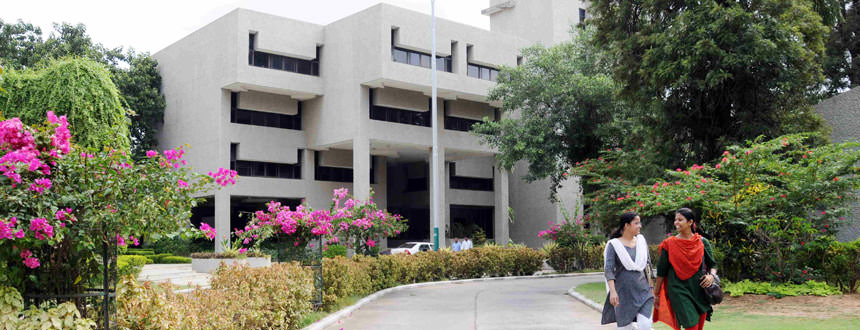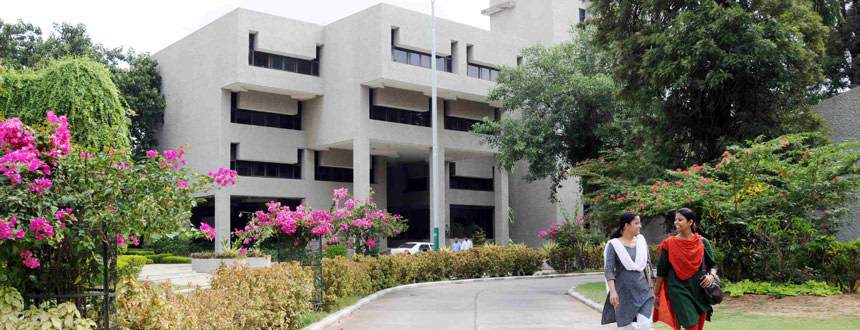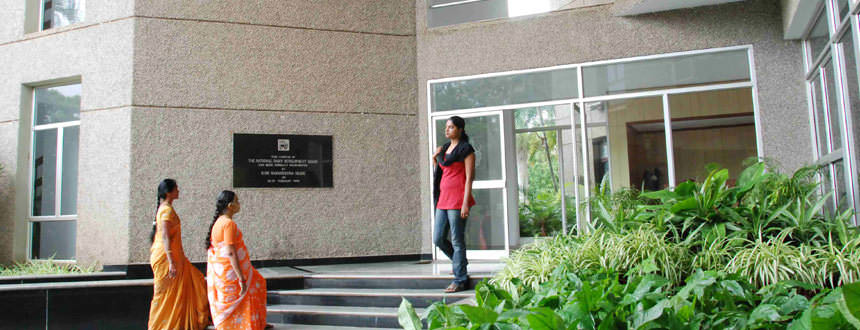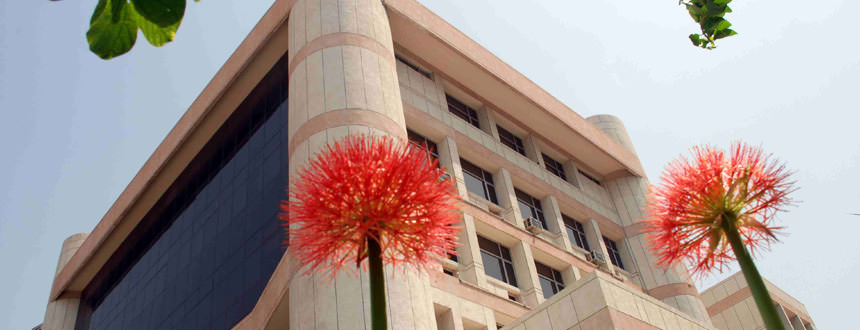Indian Dairy Association - 45th Dairy Industry Conference
Indian Dairy Association - 45th Dairy Industry Conference
Shri Arun Narke, President, Indian Dairy Association, Shri Arun Patil, Chairman IDA West Zone, Shri Rajesh Lele Secretary General, other distinguished members of the dairy industry fraternity, ladies and gentlemen.
Firstly I would like to thank IDA for inviting me to deliver the key note address at the 45th Dairy Industry Conference on a subject which the dairy industry often tends to ignore or underplay.
By choosing the theme of Climate Change and Dairying, I am happy to note that the IDA has chosen to focus our attention on one of the most difficult long term challenges for the entire dairy sector, globally and for our country.
I hope to use this opportunity to focus on the issues related to climate change and dairying that we need to be aware of and what we are doing to face this challenge.
Livestock’s contribution
In our country, animals are a source of nutrient-rich food products, draught power, organic manure, domestic fuel, hides & skin. They are also regular source of cash income and an asset, which can act as an insurance against income shocks of crop failure and natural calamities.
Livestock’s role has however been declining for non-food functions and ‘draught power’ due to mechanization of agricultural operations and increased usage of chemical fertilizers in place of manure from dung. On the other hand, their importance as a source of quality food has increased due to increased incomes, greater urbanization, changing lifestyles, increasing proportion of women in workforce, improvements in transportation and storage practices and rise of supermarkets especially in cities and towns.
India’s dairy sector
As you are aware, India’s dairy sector is unique in many respects.
We are self-sufficient in milk and world’s largest milk producer with about 155 million tonnes of milk production in 2015-16 accounting for about 18% of the world’s milk production. Milk production is growing at about 6.5% annually for the last two years as against 4.7% over the earlier 10 year period. Per capita availability of milk has increased three folds – from 112 gms/day in 1970-71 to 337 grams/day in 2015-16. Milk is India’s single largest agricultural commodity in value terms and is more than the combined value of paddy and wheat put together.
To my mind, there are primarily 3 contributing factors which led to the remarkable growth of Indian dairy sector taking our country from a period of deficit four to five decades ago to one of self-sufficiency now. First is the steady growth in agricultural production which made it possible to make available adequate feed and fodder to the animals. Second is our cross breeding strategy which ensured retention of the climate resilient traits of our native breeds. And above all, thirdly the powerful role played by farmer owned and controlled institutions which provided market access to millions of small holders.
More importantly, dairying in India is more about livelihoods to millions of small holders than simply a business, due to a stable cash flow as compared to crop cultivation and its contribution towards nutritional security for families owning milch animals.
Milk producing households are predominantly small farmers with less than 2 ha of land and 1 to 2 animals. Ownership of dairy animals is more evenly distributed in India as compared to operational land holdings.
India’s model of milk production is based on feeding crops residues and agricultural byproducts and using family labour to add value to resources which otherwise have limited alternative economic value.
India’s dairy production system is more efficient in terms of protein conversion since the ratio of animal protein output produced per unit of human edible protein is more than developed dairying countries.
Due to a number of factors like growing population, rising incomes, increasing urbanization, predominance of lacto- vegetarian dietary pattern, demand for milk and milk products is steadily rising in our country. By 2050, India would become the world’s most populous country – about 1.7 billion and about
600 million in middle income class.
As per market research reports, the value of the Indian market for milk and milk products is expected to grow at 15% annually of which the contribution of milk products like cheese, paneer, fermented milk products, butter and ghee would be significant which represents both an opportunity and challenge to our dairy industry.
Our efforts are aimed at meeting this growing demand for milk mainly from domestic production to continue to maintain our self-sufficiency and food and nutritional security in a sustainably way – socially, economically and importantly environmentally.
Climate patterns and natural resources
Climate patterns and resource endowments have significant implications for agriculture and livestock since parameters such as temperature, humidity, rainfall affect water and other resources and thereby agriculture and livestock.
India has a variety of climate regimes and regional and local weather conditions due to its geographical spread. While the northern region of the country have alternating seasons of severe summer and cold winter, the coastal regions of the country receive frequent rains and have nearly uniform warmth through the year.
For rainfall, India is entirely dependent on the monsoons - with the South-west in summer accounting for nearly 75% of the annual rainfall of the country and the North-east monsoon in winter months bringing rain mainly to the southeast parts of the country. There is however variation and unevenness across season and geographical areas as well as frequent departure from normal. Water resources, agriculture, power generation and ecosystems of the country are affected by variation in the onset, withdrawal and amount of rainfall.
India has significant variations in temperature across the country, with severe winter in the North due to influence of continental winds and moderate temperature as one moves towards the South. There is also a long term increase in the annual temperature. Indian Meteorological Department’s data indicates that rate of increase in mean, maximum and minimum temperatures was about 0.2°C per decade during the period 1981-2010 which is higher than the trends for the entire period 1901-2010.
Of India’s total annual water resources of about 4,000 billion cubic metres (BCM), only 1,123 BCM is utilizable. Of this, 61% is available as surface water resource and the rest 39% as ground water resource. Due to imbalance in volume of water extraction and replenishment rate of groundwater, water table is being rapidly lowered. This ultimately is leading to the consumption of more energy for pumping out the water from deeper water tables.
India’s land use pattern indicates that while approximately 46% of the area is cultivated, about 24% is under forests/tree cover and the remaining 30 % is not available for cultivation or is fallow. However, the Indian sub-continent is exposed to natural catastrophes with nearly 59% of the land vulnerable to earthquakes, 8.5% to cyclones and 5% is prone to river basin floods.
Climate change and its impacts
The key takeaways of the Fifth Assessment Report of the Intergovernmental Panel on Climate Change (IPCC) are:
- Human influence on the climate system is clear with emissions of green-house gases most likely to have caused warming and other long lasting changes. Limiting climate change would require substantial and sustained reductions in greenhouse gas emissions.
- Surface temperature is projected to rise over the 21st century under all scenarios, with high likelihood of frequent and longer heat waves, intense and more frequent extreme precipitation events, continued trend in warming and acidification of oceans as well as rise in mean sea levels.
- Adaptation and mitigation are complementary strategies for reducing and managing the risks of climate change and no single option is sufficient. While adaptation can reduce the risks of climate change impacts there are limits to its effectiveness, especially with greater magnitudes and rates of climate change. Mitigation through substantial emissions reductions can help limit warming to below 2°C relative to pre-industrial levels.
The dairy sector is likely to be affected both directly and indirectly by climate change. While stress to animals caused by changes in temperature-humidity index would directly affect milk production and animal reproduction, indirect effects include feed and water availability being impacted by adverse climate events.
Research indicates that stress from heat can cause decline in milk yield in the range of 10 to 30 % in first lactation and 5 to 20 % in second and third lactation, and that both the heat waves and cold waves can cause short to long term cumulative heat effect on milk production in cattle and buffaloes.
Heat stress can also impact animal reproduction adversely as levels above the acceptable levels can impact conception rates. Stressful heat can also reduce blood flow to uterine tract and damage developing embryos as well as impact semen quality.
Variability and extreme events in climate like drought, heat waves and cyclones are likely to put additional stress on fragile zone in arid and semi-arid regions thereby impacting crop production and the consequential availability of residues for feed. Lignin formation in plant tissues can increase with higher temperatures leading to lower digestibility and rates of degradation of fodder and crop residues in the rumen of animals leading to reduced nutrient availability for animals and thereby reduction in production.
Climate change can impact the frequency and extent of outbreaks of infectious diseases like FMD and HS as well as cause new transmission modes which can be aided by reduced immunity levels due to inclement conditions. While increased temperatures can increase rate of growth of pathogens outside their host, altered humidity levels can affect those sensitive organisms and changes in wind patterns can affect the spread of diseases.
Increased temperatures can result in increased usage of water by animals both for drinking and any usage for cooling the animal. Studies indicates that water intake increases from about 3 litres per kg dry matter intake at 10 degrees centigrade ambient temperature to about 10 litres in case of indigenous cattle and about 14 litres in case of exotic breeds (Bos taurus) at 35 degrees centigrade. Some of this water intake comes from forage, and forage water content itself will also depend on climate related factors.
Adapting to climate change
As our indigenous breeds have genetic traits that help them to survive with in harsh climates, pursuing breeding policies that encourage an appropriate mix of breeds that can adapt to the region in which they are to kept should be the most important element in our adaptation strategy.
Under National Dairy Plan (NDP) I – a programme under implementation by NDDB, indigenous breed development programmes for eleven breeds – Kankrej, Rathi, Gir, Sahiwal, Hariana and Tharparkar breeds of cattle and Murrah, Mehsana,
Nili Ravi, Jaffarabadi and Pandharpuri breeds of buffaloes are being implemented in their respective native tracts through a scientific selection programme.
To adapt to heat stress, experts recommend simple modifications in feeding practices such as hydration of dry straws, incorporation of good quality green fodder when available, replacing poor quality roughage with concentrate, feeding properly chaffed dry fodder etc.
Animal shelters that have appropriate design, height and orientation, choice of roofing material, provision of open space for ventilation and space per animal can help in creating a cooler microenvironment for animals. Water can be used to bring down the micro-environmental temperature within the animal shelters and increase the evaporative heat loss from animal body.
Mitigation measures for climate change
The ultimate objective of the United Nations Framework Convention on Climate Change (UNFCCC) is stabilizing greenhouse gas concentrations in the atmosphere at a level that would prevent dangerous anthropogenic interference with the climate system.
India’s gross emissions of Greenhouse Gases was estimated at 2.136 billion tonnes in CO2 equivalent in 2010, of which the energy sector contributed 71%, Industrial product and process use - 8%, Agriculture - 18% and Waste sector - 3%. After the offset by carbon sink action of forests and croplands, the net emissions is about 1.884 billion tonnes of CO2 equivalent.
Of the 0.39 billion tonnes of CO2 equivalent from agriculture in India, about 58% (0.23 billion tonnes) is from enteric fermentation from livestock. While India’s dairy sector accounts for 18.3% of global milk production, its contribution to GHG emissions is only 14.1 %.
There are a number of ways in which we can either avoid increasing the emission intensity or reduce the emissions of greenhouse gases :
Due to increased productivity, carbon foot print of milk in terms of kg of CO2 equivalent per kg of Fat and Protein corrected Milk (FPCM) decreased in case of both cattle and buffalo milk over a ten year period ending 2014. These are lower than the corresponding values reported by FAO for South Asia.
In the area of animal breeding, methane emissions from dairy animals on per kg of milk basis can be reduced by ensuring a higher proportion of in-milk animals through an efficient system for AI and by up-gradation of non-descript animals. These measures will result in higher productivity and thereby lower emissions per kg of milk.
A lower carbon footprint for crop residue based milk production system in India is primarily due to the fact that animals’ ration does not contain significant quantity of grains and green fodder, which require a substantial amount of energy and fertilizer for their production.
In mixed crop livestock system of India, CO2-eq. emissions are avoided annually due to use of draught power in agriculture, use of dung cake and biogas for cooking and use of biogas slurry as a valuable source of bio-fertilizer for crop production.
Studies conducted by NDDB indicate that it is possible to reduce enteric methane emission by 10% on feeding a balanced ration in dairy animals. Under NDP I, NDDB is implementing Ration Balancing Programme (RBP) in all major dairying states. About 2 million animals are covered under RBP and there is a net reduction in methane emission.
- NDDB is implementing Concentrated Solar Thermal projects for the dairy cooperatives.
- Many Milk Unions in India have opted for Solar Powered Milk Collection Systems in India and NDP I includes such units.
- NDDB is exploring a pilot project of utilising solar Energy to power Dairy Cooperative Societies in a grid connected model wherein the surplus can be exported to the grid.
- NDDB’s wholly owned subsidiaries have also undertaken or planning to use solar power.
Concluding remarks
As climate change is a challenge that impacts all of us, our dairy sector must not only evolve adaptation strategies but also help in mitigation by contributing to reduction in greenhouse gas emissions from the dairy sector.
The Paris Agreement mandates that we do not allow the temperatures to exceed by 2 degrees centigrade from pre- industrial levels. Considering the current rate of increase in recent decades, we would breach that if we do not take urgent action in halting and reversing this increase.
In the context of climate change, we would do well to remember the wisdom of a Native American Indian proverb which goes as :
“We do not inherit from our ancestors ; we borrow from our children”.
As Voltaire famously said “Men argue. Nature acts”, we would be forced to deal with the forces of nature, if we are unable to act with urgency now.
I would once again like to wish IDA well in its efforts to highlight the importance of climate change in dairy development through this conference and hope that the ideas presented by the various speakers as well as the discussions on them would result in an actionable agenda for action in which all stakeholders of our dairy industry would have to contribute to our country’s commitment to reduce greenhouse gas emissions in the coming years.









